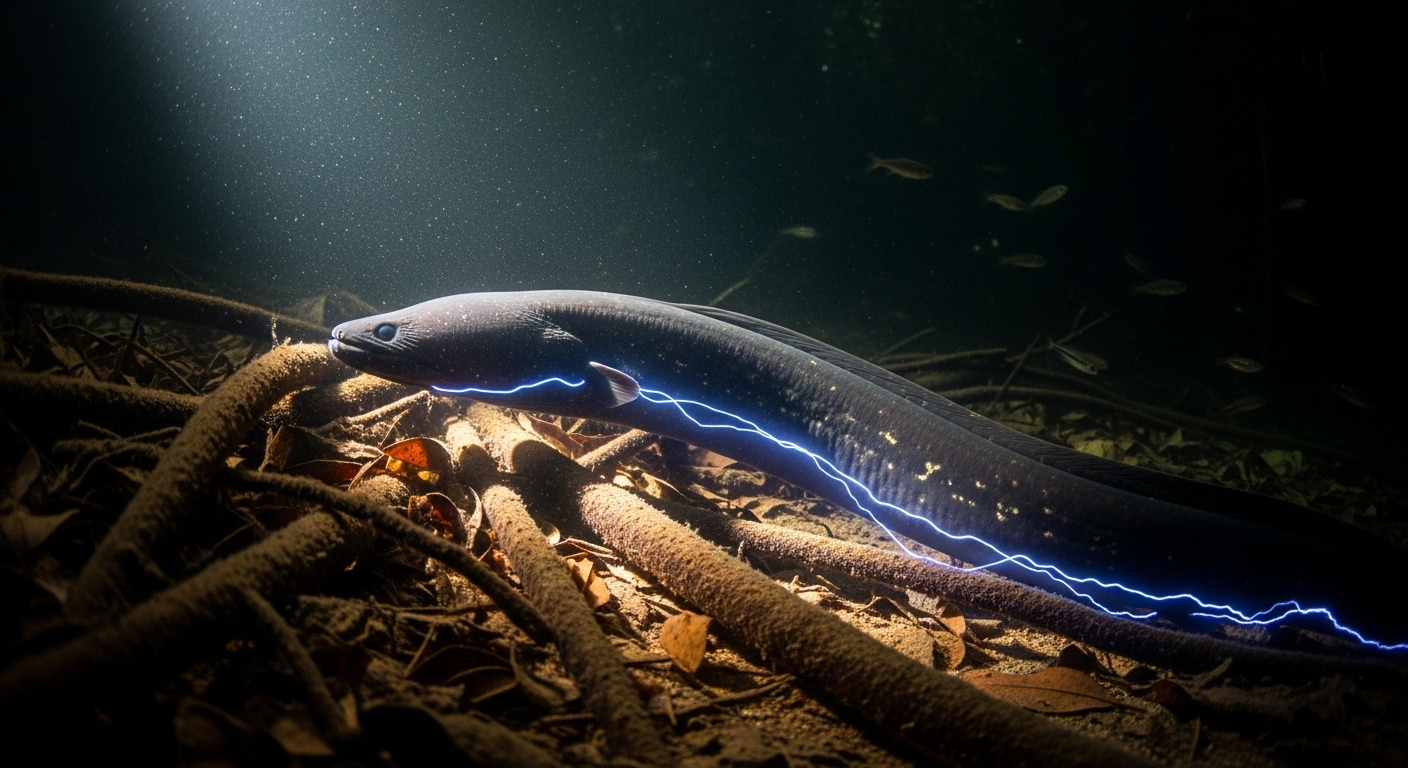The Enigmatic World of Electric Eels: Nature's Living Batteries
The realm of aquatic life holds countless marvels, but few creatures capture the imagination quite like the electric eel. These fascinating beings, capable of generating powerful electric shocks, have long intrigued scientists and nature enthusiasts alike. From their unique anatomy to their surprising behaviors, electric eels continue to spark curiosity and challenge our understanding of bioelectricity in the animal kingdom.

The Electric Eel: A Biological Marvel
Electric eels, scientifically known as Electrophorus electricus, are not actually eels but rather knife fish. They belong to the order Gymnotiformes, a group of freshwater fish known for their ability to produce weak electric fields. However, the electric eel takes this ability to an extreme, evolving specialized organs that can generate both strong and weak electric discharges.
These remarkable creatures can grow up to 8 feet long and weigh up to 44 pounds. Their elongated bodies are mostly taken up by three specialized electric organs: the main organ, Hunter’s organ, and Sachs’ organ. These organs, composed of electrocytes (modified muscle cells), work together to produce the eel’s signature electric discharges.
The Evolution of Bioelectricity
The development of electric organs in fish is a fascinating example of convergent evolution. While electric eels are the most famous, over 350 species of fish have evolved some form of electric organ. This includes marine rays, African freshwater fish, and even some catfish species.
Scientists believe that the ancestors of electric eels began developing their electric organs over 100 million years ago. The process likely started with muscle cells that could produce weak electric fields for communication and navigation. Over time, these cells specialized and multiplied, eventually forming the powerful electric organs we see in modern electric eels.
Hunting with Electricity: A Shocking Strategy
Electric eels use their bioelectric abilities for more than just defense. Their hunting strategy is a sophisticated combination of electroreception and electrical discharge. Using weak electric fields, they can navigate and detect prey in their murky habitat. When prey is located, the eel unleashes a series of high-voltage discharges.
These discharges serve multiple purposes. First, they stun or immobilize the prey, making it easier to capture. Second, they cause nearby fish to twitch involuntarily, revealing their location. Finally, the electric field can force hidden prey out of hiding spots, making them vulnerable to attack.
Beyond Hunting: Communication and Courtship
While the electric eel’s shocking abilities are primarily associated with hunting and defense, recent research has uncovered more nuanced uses of their bioelectricity. Electric eels use low-voltage discharges for communication, particularly during courtship and mating rituals.
During breeding season, male electric eels produce specific electrical patterns to attract females. These electrical ‘love songs’ can convey information about the male’s size and fitness, allowing females to choose the most suitable mates. This discovery has opened up new avenues of research into the social behaviors of these typically solitary creatures.
Electric Eels in Science and Technology
The unique abilities of electric eels have not gone unnoticed by the scientific community. Researchers are exploring various applications inspired by these living batteries. One area of interest is the development of bio-inspired power sources.
Scientists are studying the eel’s electrocyte cells to create artificial versions that could power small medical devices or environmental sensors. The hope is to create flexible, biocompatible batteries that could be used in a wide range of applications, from powering pacemakers to charging smartphones.
Another promising area of research involves using electric eel-inspired technology to treat certain neurological disorders. The eel’s ability to generate and control electrical impulses could lead to new treatments for conditions like epilepsy or Parkinson’s disease.
Conservation Challenges and Future Prospects
Despite their fascinating abilities, electric eels face several conservation challenges. Habitat destruction, pollution, and overfishing threaten their populations in the wild. Climate change also poses a significant risk, as it alters the delicate ecosystems of their freshwater habitats.
Conservation efforts are underway to protect these unique creatures and their habitats. Researchers are working to better understand their lifecycle, breeding habits, and environmental needs. This knowledge is crucial for developing effective conservation strategies and ensuring the long-term survival of electric eels in the wild.
As we continue to unravel the mysteries of electric eels, it’s clear that these remarkable creatures have much more to teach us. From their evolutionary history to their potential applications in technology and medicine, electric eels remain one of nature’s most intriguing and valuable species. By protecting and studying these living batteries, we not only preserve a unique part of our planet’s biodiversity but also unlock potential solutions to some of our most pressing technological and medical challenges.





